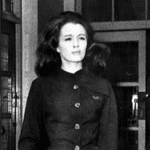Unseen Poem in Hindi with Questions and Answers: Analyzing for Deeper Understanding

Unseen poems in Hindi examinations can often be daunting for students. Encountering a new piece of poetry without prior context can feel like deciphering a secret code. But fear not! By employing a few key strategies, you can approach unseen Hindi poems with confidence and unlock their hidden meanings.
The first step involves a close reading of the unseen poem in hindi with questions and answers itself. Read the poem slowly and attentively, savoring the rhythm, word choice, and imagery. Pay close attention to unfamiliar words; underlining them can help you revisit them later. As you read, try to grasp the overall mood or atmosphere of the poem. Is it joyful, melancholic, reflective, or something else entirely?
Once you have a general sense of the poem’s tone, delve deeper into the individual elements. Analyze the use of figurative language. Does the poem employ similes, metaphors, personification, or other literary devices? How do these figures of speech contribute to the meaning and imagery? For instance, a simile comparing a lonely heart to a deserted house paints a vivid picture of isolation.
Another crucial aspect to consider is the structure of the poem. Is it a sonnet with a strict rhyme scheme and meter, or a free verse poem with a more flowing structure? Does the poem adhere to a specific form, like a haiku or a villanelle? Understanding the poem’s structure can provide clues about its intended meaning and the poet’s message.
The vocabulary used in the poem also holds significance. Are there words with multiple meanings? Are there cultural references specific to a particular region or era? Consulting a dictionary or researching online can help you decipher these nuances and gain a deeper understanding of the poem’s message.
Now that you’ve analyzed the individual elements, it’s time to consider the poem as a whole. What is the central theme or message the poet is trying to convey? Is it a commentary on love, loss, nature, society, or something else entirely? Look for recurring words, images, or symbols that might offer clues about the poem’s core message.
Here’s an example to illustrate this process. Imagine encountering the following unseen Hindi poem:
सूरज ढलने को आया,
आसमान हुआ लाल,
पंछी लौट रहे हैं अपने घोंसलों को,
छा गई शाम की धुंध.
(Translation: The sun is setting, the sky is red, birds are returning to their nests, the evening mist has descended.)
By closely reading the poem, you’d notice the use of simple language and imagery related to nature. The overall mood is peaceful and melancholic. There are no complex figures of speech, but the repetition of the long “aa” sound creates a sense of calmness and finality. The structure is simple, lacking a specific rhyme scheme or meter.
Analyzing the vocabulary reveals no particularly difficult words. However, the symbolism is key. The setting sun and returning birds represent the end of the day, a time of reflection and quietude. The evening mist suggests a blurring of lines, a transition from one state to another.
Putting these elements together, you might conclude that the unseen poem in hindi with questions and answers about the beauty and peacefulness of nightfall. It could also be interpreted as a reflection on the passage of time and the cyclical nature of life.
This is just a basic example, of course. Unseen Hindi poems can range from simple and straightforward to complex and layered. The key lies in approaching them systematically, focusing on the individual elements and then piecing them together to grasp the larger meaning.
Here are some additional tips for tackling unseen Hindi poems:
- Practice makes perfect: The more unseen poems you analyze, the more comfortable you’ll become with the process. Look for unseen poem collections or online resources to hone your skills.
- Don’t be afraid to guess: If you’re unsure about the meaning of a particular word or phrase, take an educated guess based on the context. Sometimes, a well-reasoned guess can lead you to the right interpretation.
- Think outside the box: While there might be a “correct” interpretation of a poem, there can also be multiple valid perspectives. Don’t be afraid to come up with your own unique interpretation based on your understanding of the text.
By following these strategies and developing your analytical skills, you can transform unseen poems in Hindi with Questions and Answers from daunting challenges into rewarding opportunities to explore the beauty and depth of the language. So, the next time you encounter an unseen poem, take a deep breath, employ these techniques, and unlock the hidden treasures within the verse.


